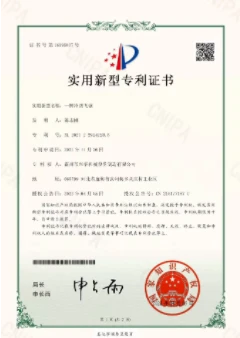Innovative Techniques in Roll Forming for Precision Metal Fabrication
Understanding Roll Forming A Versatile Manufacturing Process
Roll forming is a continuous bending operation in which a long strip of metal is passed through consecutive pairs of rolls. Each pair of rolls shapes the metal gradually until it reaches the desired cross-sectional profile. This innovative manufacturing process is widely used in various industries for its efficiency, flexibility, and ability to produce complex shapes with high precision.
The Process of Roll Forming
The roll forming process begins with a flat strip of material, typically metal, although plastic and other materials can also be utilized. The strip is fed into a series of rollers arranged in a specific sequence, each designed to impart a particular shape to the material. As the strip passes through these rollers, it is progressively bent into the desired profile without significant alteration in thickness.
One of the key advantages of roll forming is its ability to produce long lengths of parts. Unlike other manufacturing processes that require cutting and joining, roll forming can generate continuous lengths of a particular profile, which can then be cut to size. This not only minimizes material waste but also enhances production efficiency, making it an economical choice for manufacturers.
Applications of Roll Forming
Roll forming is utilized across a variety of industries, showcasing its versatility and adaptability
. One of the most common applications is in the production of metal building materials, such as roof panels, wall panels, and structural components. The automotive industry also leverages roll forming for creating components like chassis, brackets, and reinforcements that require high strength-to-weight ratios.roll forming

Additionally, roll forming is popular in the manufacturing of parts for the appliance industry, producing components for refrigerators, ovens, and other household appliances. Its ability to create intricate shapes, such as channels, angles, and custom profiles, makes it suitable for specialized applications in various fields, including electrical components, furniture, and even aerospace.
Benefits of Roll Forming
The roll forming process offers several notable advantages. Firstly, it is characterized by high efficiency; once the tooling is set up, production can be continuous, allowing for high output rates. Secondly, the consistent and precise nature of roll forming ensures that parts are manufactured to exact specifications, reducing the need for secondary operations and scrap material.
Another significant benefit is the strength of the finished products. The cold working process that occurs during roll forming enhances the strength of the metal, creating components that are not only lightweight but also durable. Furthermore, the process allows for a variety of coatings and finishes to be applied, enabling manufacturers to provide additional protection against corrosion and enhance aesthetic appeal.
Conclusion
In conclusion, roll forming is an essential manufacturing technique that offers numerous advantages across different industries. Its ability to produce long lengths of precisely shaped components efficiently makes it a preferred choice for many manufacturers. As industries continue to evolve and demand more innovative solutions, roll forming stands out as a reliable and versatile process that meets the challenges of modern manufacturing. Whether for building materials, automotive components, or custom applications, roll forming is poised to remain a fundamental part of the industrial landscape. The future of roll forming looks promising, with advancements in technology further enhancing its capabilities and applications.
-
High Frequency Straight Seam Welded Pipe Production Line-BzZhou Xinghua Machinery Equipment Manufacturing Co., LTD.|line pipe steel&welded gas pipeNewsJul.30,2025
-
High Frequency Straight Seam Welded Pipe Production Line-BzZhou Xinghua Machinery Equipment Manufacturing Co., LTD.|High Precision&Automated SolutionsNewsJul.30,2025
-
High Frequency Straight Seam Welded Pipe Production Line - BzZhou Xinghua Machinery Equipment Manufacturing Co., Ltd.NewsJul.30,2025
-
High Frequency Straight Seam Welded Pipe Production Line-BzZhou Xinghua Machinery Equipment Manufacturing Co., LTD.|Precision Welding, High EfficiencyNewsJul.30,2025
-
High Frequency Straight Seam Welded Pipe Production Line|BzZhou Xinghua|Precision Welding&EfficiencyNewsJul.30,2025
-
High Frequency Straight Seam Welded Pipe Production Line - BzZhou Xinghua|Precision Engineering&EfficiencyNewsJul.30,2025


